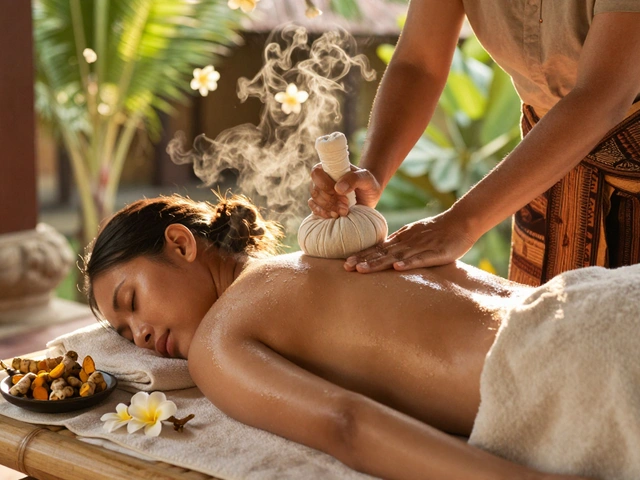Lomi Lomi Massage — What It Is and Why It Feels Different
Want a massage that feels like waves moving through the body? That’s Lomi Lomi. Originating in Hawaii, Lomi Lomi uses long, flowing strokes with the hands and forearms to release tension and bring deep relaxation. Unlike targeted sports work, Lomi Lomi focuses on rhythm and flow. That makes it great for calming nervous dogs and easing general muscle tightness.
How Lomi Lomi Works
Lomi Lomi blends steady pressure, sweeping strokes, and continuous movement. Practitioners move in large patterns, often using the forearm to cover more surface with even pressure. The idea is to encourage circulation, loosen fascial restrictions, and shift the nervous system from fight-or-flight to rest-and-digest. For dogs, this can mean less anxiety, calmer behavior, and softer muscles after exercise.
On people, Lomi Lomi can feel deeply relaxing. On dogs, the signs are quieter: slow breathing, soft body, licking the lips, or leaning into the touch. Always watch your pet’s signals—comfort is the goal, not forcing a technique that feels odd to them.
Try Lomi Lomi at Home: A Simple Step-by-Step for Dogs
1) Create a calm space. Low noise, soft light, and a comfy surface help. Dogs respond to atmosphere more than technique.
2) Warm your hands. Cold hands startle. Rub your palms together or hold them against your own skin for a few seconds.
3) Use long, flowing strokes. Start at the neck and sweep down the back toward the tail. Use your whole forearm for broader, gentle pressure if your dog tolerates it. Keep movements continuous—think of slow ocean waves.
4) Keep sessions short at first. Five to ten minutes is enough for a new practice. Increase to 15–20 minutes if your dog relaxes and wants more.
5) Avoid sore spots after surgery, open wounds, or inflamed joints. If your dog flinches, growls, or moves away, stop and check with your vet before trying again.
Use a small amount of a safe, unscented oil only if your dog tolerates it. Many owners prefer dry hands. Don’t press hard—Lomi Lomi is about flow and rhythm, not deep pressure.
If your dog has chronic pain or a medical condition, ask your veterinarian or a certified animal massage therapist for guidance. A trained pro can adapt Lomi Lomi moves to your dog’s needs and show you safe, effective techniques.
Want to learn more? Lomi Lomi pairs well with other gentle approaches like aromatherapy, relaxing breathing for you and your pet, or slow mobility work. If you’re curious about related methods, check out articles on Kahuna, Esalen, and neuromuscular massage to compare techniques and pick what fits your dog best.

Discover the Hawaiian Healing Touch: Lomi Lomi Massage and the Art of Relaxation
Hey everyone! Ever heard of Lomi Lomi massage? It's this amazing traditional Hawaiian secret that's all about helping you unwind and feel fantastic! I've been diving deep into the world of relaxation, and I gotta tell you, there's something really special about Lomi Lomi. It's not just a regular rubdown; it's more of a spiritual journey that brings your body and mind into harmony. Imagine gentle waves rolling over you, easing all the tension away—that's what this massage is like. I'm stoked to share my experience and insights with you all about this unique healing practice!

The Magic Touch: Understanding Lomi Lomi Massage
Aloha! This time, I'm sharing my journey of understanding the magic of Lomi Lomi massage, a traditional Hawaiian healing method. I'll take you through the fascinating historical roots of Lomi Lomi, its unique techniques, and the incredible health benefits it brings to both body and mind. So, buckle up and take a leisurely stroll with me through the world of this intriguing method of holistic wellness.

Exploring the Wonders of Snail Facial Massage
Oct, 10 2023

A Closer Look at the Traditional Balinese Massage
Dec, 10 2025


